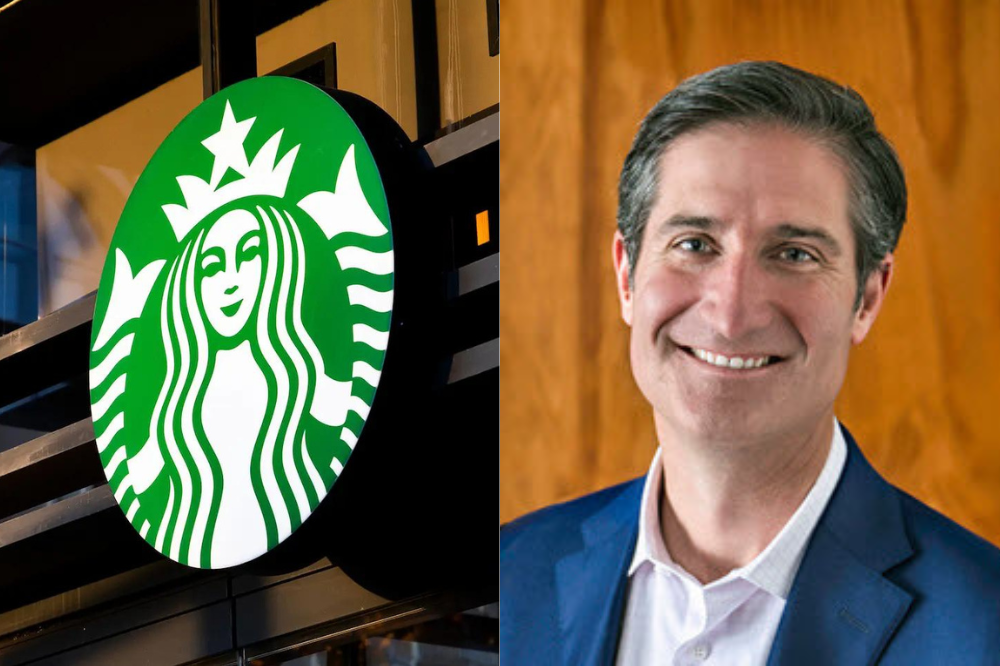 Starbucks seems to be brewing more than just coffee these days, as reports indicate that the newly appointed CEO, Brian Niccol, has been granted access to a corporate jet for his commutes between his home in southern California and the company’s Seattle headquarters. The decision has sparked considerable debate around corporate perks and their environmental impacts.
Starbucks seems to be brewing more than just coffee these days, as reports indicate that the newly appointed CEO, Brian Niccol, has been granted access to a corporate jet for his commutes between his home in southern California and the company’s Seattle headquarters. The decision has sparked considerable debate around corporate perks and their environmental impacts.
Short Summary:
- Brian Niccol, Starbucks’ new CEO, will utilize a corporate jet for travel between California and Seattle.
- The arrangement has raised questions about its environmental implications given Starbucks’ sustainability goals.
- Public reactions include criticism from environmental activists and concern over corporate responsibility.
In a recent move that highlights the intersection of corporate perks and environmental considerations, Starbucks has approved the provision of a corporate jet for its new CEO, Brian Niccol, to facilitate his weekly commute from Newport Beach, California, to the company’s headquarters in Seattle, Washington. Starbucks disclosed these details in Niccol’s offer letter, which was made public as part of regulatory filings. This arrangement not only allows Niccol to maintain a home in California but also establishes a ‘small remote office’ at his residence to accommodate his executive duties without necessitating a permanent relocation.
“Brian Niccol has proven himself to be one of the most effective leaders in our industry, generating significant financial returns over many years,” a Starbucks representative affirmed. “We’re confident in his experience and ability to serve as the leader of our global business and brand, delivering long-term, enduring value for our partners, customers, and shareholders.”
Despite the convenience this arrangement offers, it has ignited a firestorm of criticism from climate activists and concerned citizens alike. The utility of a private jet has been juxtaposed against Starbucks’ professed commitment to sustainability, notably a pledge made in 2020 to cut carbon emissions in business operations and supply chains by 50% by 2030. The disparity between promoting eco-friendly practices for consumers while enabling corporate travel that contradicts environmental ethics has raised eyebrows.
Corporate Jet Perks Amid Environmental Concerns
Niccol’s contract stipulates an annual cap of $250,000 for the company jet’s usage for both business and personal travel, with costs determined by the additional expenses incurred by Starbucks. Given that Niccol will reportedly work mainly from the Seattle headquarters—required to be there at least three days a week—many flights are anticipated along the West Coast.
The CEO, who previously helmed Chipotle Mexican Grill, is stepping into the shoes of Laxman Narasimhan, a brief steward of the Starbucks helm. Niccol’s extensive background in the industry is expected to drive a resurgence of the brand’s sales, which have recently flagged.
“Brian’s primary office will be at our Seattle Support Center or out visiting partners and customers globally,” the spokesperson confirmed to CBS MoneyWatch, indicating that this corporate jet would not be a frivolous expenditure but rather a necessary aspect of his role.
The Critics Weigh In
The environmental ramifications of private jet travel cannot be overlooked. According to the International Energy Agency, this mode of transportation is responsible for emitting about 800 million tons of carbon dioxide annually, comprising over 2% of global energy-related emissions. Reports from the Institute for Policy Studies reveal that private jets burn significantly more fuel per passenger mile compared to commercial airlines, intensifying concerns about pollution during a climate crisis.
Climate activists have pointed fingers at Starbucks to illustrate what they deem corporate hypocrisy. Clara Thompson of Greenpeace expressed her dismay, stating, “As the world faces unprecedented climate challenges, it is unjustifiable for companies to offer company aircraft as perks. These jets exemplify social and climate injustice, showcasing how the privileged few indulge in the most environmentally damaging form of travel.”
This sentiment is echoed by many on social media, with users highlighting the contradiction of Starbucks’ initiatives, such as rolling out paper straws in their coffee shops, while simultaneously indulging their CEO with a corporate jet. “Is this corporate hypocrisy at its peak?” one user questioned on X, referencing the company’s well-documented sustainability agenda.
A Balancing Act Between Convenience and Climate
Brian Niccol, who will officially take charge on September 9, faces a daunting double challenge: reclaiming Starbucks’ place in the hearts of its customers while navigating the storm of scrutiny regarding his commute. Though he is not the only executive to benefit from such travel perks, the publicity surrounding his appointment comes at a time when corporate accountability is under the microscope.
From a managerial perspective, some experts have expressed skepticism regarding the efficacy of such an arrangement. Columbia Business School professor Shivaram Rajgopal expressed concerns over Niccol’s physical presence at the Seattle headquarters, suggesting that leadership visibility is crucial to corporate operations.
“I’m skeptical about whether this whole arrangement will even work. A leader has to be on-site and visible, and while emissions may be a concern, this isn’t just about optics; it’s also about effective management,” Rajgopal further elaborated.
Looking Ahead: Future Implications
As Brian Niccol prepares to take the reins, the success of his leadership will likely be tied to his ability to balance these contrasting objectives: delivering results for Starbucks while honoring the company’s environmental commitments. His tenure could provide a valuable case study in corporate culture and sustainability practices, both in terms of operational policies and public perception.
In light of Starbucks’ stated goal to become a resource-positive company by not just reducing emissions but actively storing more carbon than it emits, the question remains whether implementing accommodations that conflict with these goals is prudent. Observers will undoubtedly be tracking not only the financial health of Starbucks under Niccol’s stewardship but also how the company navigates the choppy waters of climate responsibility.
The ongoing conversation about Niccol’s corporate jet exemplifies a larger trend in corporate America: the intersection of comfort, convenience, and environmental accountability that can no longer be ignored. As Starbucks delves deeper into its operational practices, it will be imperative for the leadership to consider realigning its strategies to support greater sustainability while still appealing to the need for efficiency and effectiveness in high-level management.



